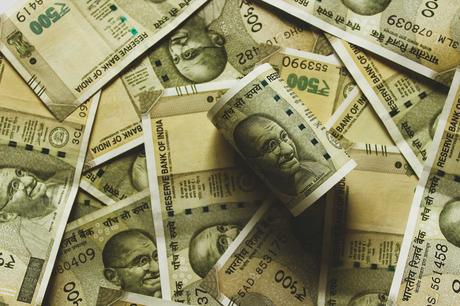The USD/INR has slumped from a high of 74.00 levels on February 26 to 72.50 on March 15, affected by high inflation and low industrial production numbers.

USD/INR Weakens in March
On Friday, February 26, the USD/INR rose high, but nosedived by almost 100 paise the next day. It lost 1.92%, with volatility increasing on the currency pair on the last week of February.
The US dollar index against the Indian Rupee declined from 74.06 on Feb 26 to 73.10, the next trading day on March 1, 2020. The increasing global oil benchmark, high inflation, and low production numbers were the reason for the slump, claim experts.
The equity market has powered ahead
with foreign investment pouring in. The USD/INR is losing strength in March, with economic data worsening sentiment.
Inflation Increases and Industrial Production Decreases
Wholesale Price Index (WPI) inflation in February was 4.17%, while in January it was 2.03%. Food inflation and increase in fuel prices have brought up inflation. WPI inflation is at a 27-month high, reflecting an increase in commodity prices.
Retail inflation in February has gone up to 5.03%, much higher than the January reading at 4.83% and above forecast at 4.83%.
Index of Industrial Production (IIP) data in India has contracted 1.6% in January, while December data was more positive. IIP number has contracted for the last few months between April and January 2021 by more than 12%. Production of cars, machines, and shirts has been hit during the pandemic times. The overall GDP is expected to contract by 8% for the fiscal year ended 2021, which does not reflect well on the economy.
Consumer Confidence in India has gone up to 52 points for the last quarter of 2020, while the third-quarter data was at 50 points. It reflects that the employment scenario has improved along with consumer spending and the overall economic situation.
Reserve Bank of India to Tackle Inflation
The Reserve Bank of India cut interest rates in May 2020 by 115 basis points, and bank rates continue at the same level. The repo rate in February at 4% may continue till April, predict experts. The RBI has maintained an "accommodative stance" to protect the economy during the pandemic.
Experts, however, warn about changes brought in the monetary policy framework. Inflation is high, and the bond market may face a reverse movement along with economic growth.
The RBI is considering a ban on cryptocurrencies, though users have raised concern over this issue. Blockchain technology should not be encouraged, as it may bring in money laundering or set in terror financing. Illicit money that is locked overseas may return to the country through the cryptocurrency, says RBI governor Shaktikanta Das.
Corona Virus Threatens the Economy
New covid-19 cases are increasing across various parts of India. The vaccination drive is also picking up speed. The Health Ministry of India has said that more than three crores have been vaccinated. People aged above 60 and health workers have benefited from the first dose.
Quad and the Indo-Pacific Relationship
At the Quad Virtual Summit held on Friday between Australia, Japan, India, and the United States, the four countries have agreed to promote a free and open Indo-Pacific relationship. We strive towards a peaceful resolution of disputes, to bring in democratic values, unconstrained by coercion, says the Quad report. The Quadrilateral Security Dialogue has sent a strong message to Beijing without actually pointing fingers.
US Dollar Index
The US dollar index is trading at 91.85 during trading hours on Tuesday, March 16, ahead of the monetary policy on Wednesday, and investors wait for further announcements. The rupee has gained sharply against the dollar.
The US dollar has gained after the stimulus package for $1.9 trillion was signed by President Joe Biden. The president has promised to vaccinate all adults by the beginning of May, and it has improved sentiment in the US economy.
The US Treasury yield has moved higher with economic recovery setting into the economy, along with the US dollar. Bond yields are now at a 13-month high as investors expect massive growth in the economy.
Investors are wary about the US stimulus package as they expect the relief package to promote inflation and bring down bond prices.
Crude prices are increasing with production cuts and higher demand. With a recovery in the global economy, demand for crude oil has increased, pushing up crude prices.
EUR/INR
The EUR/INR currency pair has moved lower from 89.50 levels on February 26 to 86.50 levels on March 15.
The third wave of the pandemic is affecting countries like Germany and Italy, and restrictions are tightened in these countries. Infections are increasing in Poland and Hungary. Europe had led the way during the initial pandemic days but is now reeling under health issues.
GBP/INR
The British pound against the Indian rupee has moved lower to 100.73 after rising to 103 in the last week of February.
The British pound may stabilize, once the US Treasuries become less volatile, say experts. The sterling has rallied higher since Brexit and has gained strength with a successful vaccination program.
The Bank of England interest rate decision this week and the FOMC meeting will play a significant role in the forex market movement in the days to come.

